Touring Italy by Motorhome
Want to tour Italy by motorhome or campervan? This hands-on guide includes all the practical information you’ll need to know before you go!
Italy in a Nutshell
Key Facts for Touring Italy by Motorhome
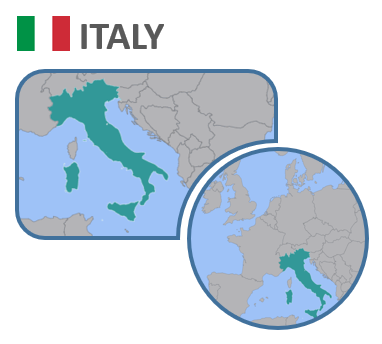 If you’re pressed for time, here are the essential facts to know when planning your motorhome tour of Italy. We dive into more detail on each of these later in this guide.
If you’re pressed for time, here are the essential facts to know when planning your motorhome tour of Italy. We dive into more detail on each of these later in this guide.
- Weather – Italy’s climate varies dramatically across the country – from Alpine conditions in the far north to winter sun in Sicily in the far south.
- Currency – Italy uses the Euro (€) – and £1 is roughly €1.20.
- Insurance – most motorhome insurance policies will cover Italy – check your policy.
- Language – locals speak Italian although some will speak English to a degree.
- Place to Stay – Italy has a good network of motorhome aires (sostas) and campsites, and overnight parking is possible in many places, especially the south below Naples.
- Mobile Phone and Internet – Italy is in the EU, and several UK-based telco companies offer pay-as-you-go or contract SIM cards where you can use your UK allowance in Italy, subject to restrictions. We use Three’s Internet with Legs SIM cards in Italy.
- Getting there from the UK – the fastest routes are across France and through the Mont Blanc Tunnel, which stays open all year, or across Switzerland.
- Renting a Van – if you don’t have the time to drive your own motorhome, there are several companies renting vans in Italy. Expect prices of roughly £700 to £2000 a week for a two berth panel van.
- Customs – you can cross borders between EU countries with large amounts of alcohol and tobacco, as long as it’s for personal use. There are no customs posts at land borders, except with Switzerland.
- Pet Dogs – with an EU Pet Passport you can visit Italy with your pet dog(s), then return to the UK after a vet-administered worming treatment.
- Roads – Italy’s roads and motorways aren’t bad, but they aren’t great either. Driving in Italy can be a challenge, but persevere and the country will reward you.
- Headlights – some countries require you to drive with dipped headlights, even during the day. Italy doesn’t have this law.
- Compulsory Equipment – download the AA’s latest requirements PDF to see what you need to carry.
- Tyres – check the AA’s page for the latest details. If you plan to travel to Alpine areas of Italy in winter, be aware of the need for M+S or full winter tyres and snow chains.
- LPG (Gas) – available from lots of locations across Italy.
- Tolls – Italy’s motorways (autostrada – which are mostly dual carriageways) are mostly toll. You can pay in cash, there’s no need to obtain a windscreen vignette or electronic device like a GO-Box.
- Ferries – various ferries leave from Italy to Croatia, Greece, Tunisia and so on as part of a longer European motorhome tour.
Great Places to Motorhome to in Italy
Where do we start? Italy’s a vibrant, historic, sometimes frustrating but overall a rewarding country to visit. Here are just a few of the places we’ve visited. Click on the links below to get the full blog post, with the GPS co-ordinates of where we stayed overnight.
- The Italian Lakes (blog post here)
- Piedmont, Barolo Wine Country (blog post here)
- Turin (blog post here)
- Venice (blog post here)
- The Dolomites (blog post here)
- La Spezia and the Cinque Terre (blog post here)
- Pisa (blog post here)
- Florence (blog post here)
- Chianti, Tuscany (blog post here)
- Rome (blog post here)
- Vesuvius (blog post here)
- Naples, Pompeii and the Amalfi Coast (blog post here)
- Mount Etna (blog post here)
- Trulli Houses of a street in Alberobello (blog post here)
A few of the museums we visited deserve a mention too, they were top quality:
- The Egyptian Museum – Museo Egizio in Turin (blog post here)
- The National Archaeological Museum of Naples (blog post here)
- The Uffizi Gallery in Florence (blog post here)
- And on a smaller scale: The Museo Leonardiano di Vinci museum, in Vinci (blog post here)
A Quick Look at Italy – Some Short Videos
Driving a motorhome through the Mont Blanc Tunnel from France to Italy
Driving a motorhome on the frenetic streets of Palermo
The view from Mount Vesuvius over the Bay of Naples
The stunning theatre at Taormina, Sicily
A look around an Italian motorhome sosta (aire)
A brief look at driving a motorhome on Italian roads
How Much Does It Cost to Tour Italy?
Before we first visited Italy, we’d heard a few times it’s considered an expensive country to travel via motorhome. ‘Expensive’ is a relative term of course, and to us it seemed a ‘middle of the road’ kind of destination in terms of cost. Diesel, petrol and LPG are some of the most expensive in Europe, and eating out felt fairly expensive to us, although groceries are roughly the same as the UK, if not a bit cheaper. We found we could generally stay at sostas or park overnight for not much money, although we did stick to campsites near the big cities for security reasons. Although Italy’s motorway network is toll, we generally avoided using it.
On the whole our experience was that Italy isn’t the cheapest of European countries to travel by motorhome, but it wasn’t overly expensive either. Like much of Europe, countries with higher fuel and food costs often allow low-cost overnight stays, which balances the costs out.
Here’s a brief summary of costs for some of our tours in Italy:
March 2013 – April 2013 (South Coast)
Duration – 13 days
Miles driven – 1211
Average daily spend – €44.74
Average spend on overnight stops – €0.23 (13 free nights – 0 free aires, 13 free camping, one charge of €3 to use a service point)
December 2012, January 2013 & March 2013 (Sicily)
Duration – 39 days
Miles driven – 1726
Average daily spend – €40.82
Average spend on overnight stops – €2.90 (27 free nights – 0 free aires, 27 free camping, 12 paid nights – 4 paid aires, 8 campsite)
November 2012 – December 2013 (Italian West Coast & Tuscany)
Duration – 57 days
Miles driven – 2680
Average daily spend – €34.59
Average spend on overnight stops – €4.54 (36 free nights – 14 free aires, 22 free camping, 21 paid nights – 11 paid aires, 10 campsite)
May 2012 (Northern Italy)
Duration – 22 days
Miles driven – 927
Average daily spend – €28.45
Average spend on overnight stops – €3.64 (16 free nights – 8 free aires, 8 free camping, 5 paid nights – 4 paid aires, 2 campsite)
Italy by Motorhome – In Depth
When to Go to Italy
Most of our travelling in Italy has been out of season, in winter and spring. Weather-wise, we experienced everything from snow in the Dolomites, to all-night wind blasts in Sicily, to blue skies and sunshine on Mount Etna, to big fat hailstones in Rome. Temperature-wise, we enjoyed some pretty balmy days in Sicily, where our Italian neighbours travelled south to each year to avoid the winter weather up north.
One big upside of out-of-season travel was the relative quietness in the cities and at tourist attractions. We even managed to rock up to the infamously-hard-to-get-into Uffizi Gallery in Florence and buy tickets there and then, with no queue to get in.
The main downside was the fact campsites were generally closed. This wasn’t an issue in the north (above Naples say), as there were lots of sostas with service points we could use. Below Naples free camping was easier, but finding service points was a real issue, and we’d find ourselves hunting out public toilets to empty the loo. The emergence of top-quality databases like park4night.com and campercontact.com will no doubt ease this problem.
Driving Your Own Motorhome to Italy
The Via Michelin Website shows the fastest route from Nottingham to Turin to be Route 1 below, through France and under the Alps via the Mont Blanc Tunnel. It reports a distance of 852 miles (671 miles on motorways), which takes 17 hours of driving. It shows toll costs of around €280, although that seems to include a Swiss vignette for only a short section of motorway around Geneva, which could be detoured around. It’s not also clear whether it takes into account the higher motorhome cost of the Mont Blanc Tunnel (you can get the latest tunnel costs here – you can pay in cash at the tunnel entrance).
Our Motorhome Routes Including Italy
Renting a Motorhome in Italy
If you’ve not got the time to drive your own van to Italy, there are a fair few options for renting a van. The mcrent.eu website allows you to quickly and easily compare costs for different sizes and specification of motorhome picked up in Italy. They also generally allow you to take your motorhome to other countries, so you could potentially use it for a tour into Switzerland, Slovenia, Austria, Switzerland or France, for example.
For a rough idea of prices, mcrent.eu shows the following costs:
- A 2 berth panel van picked up in Rome for two weeks in May costs €1300 (around £1200)
- A 6 berth coachbuilt picked up in Bologna for two weeks in June costs €2000 (around £1800)
- A 4 berth A class picked up in Venice for two weeks in August costs €3200 (around £2900)
Finding Places to Overnight in Italy
Sostas
Italy is well geared up for motorhomes, but it is a country of two halves. Above Rome there are many sostas, and the ones we visited were very well maintained, some even had free electricity. Databases and apps like park4night.com and campercontact.com lists out hundreds of places to stay. The Camperstop Book is also a great reference guide.
Below Rome, you’re into the mezzogiorno, southern Italy (including Sicily), which has long been the financially poorer half of the country. Here sostas and service points are much rarer, although free camping is also easier in many places. Since writing this article we’ve been pointed to camperonline.it and advised there are more sostas in the south than when we travelled through. This website also lists agriturismos, businesses which allow campers to stay overnight, typically for a fee.
Sosta is the Italian word for what’s called a motorhome aire in France, somewhere that you can park your motorhome overnight and use the service point to fill up with water, empty grey water and empty black water. The prices vary greatly, expect to pay €20 or more for one in a heavy tourist attraction area such as Pisa, but there are also many towns with free parking, you just pay to use the services. Some sostas even have free services. As Italy has a great public transport system and dogs are allowed on it for free, we would often park at a free or cheaper sosta a little way out of a city and catch the bus or train in.
Campsites
We’ve stopped in a few campsites (Punta Sabbioni near to Venice, Rome, Pompeii, Giardini Naxos in Sicily) and found they had great services for us. Many didn’t have swimming pools etc, or if they did they were closed as it was out of season. All were close to public transport which meant you could stop for a few days and explore the area. The campsite in Sicily was only €6 per night in the winter, so we stopped there for a few nights over Christmas and when we returned from Tunisia.
If you’re travelling out of season, don’t miss out on the ACSI Camping Card scheme, which lists over 300 campsites in Italy offering discounted rates for those with the card.
Free or Wild camping
A tourist office in the Piedmont region told us that as long as we were legally parked, we were OK to stop in car parks. White lines denoted free parking places, blue lines meant you had to pay at a meter. We stopped in several car parks, the police even popped by in the one next to the market in Asti to check we were OK.
We also free camped in the Dolomites by the side of the road to watch the Giro d’Italia, but we suspect that was a special occasion and wouldn’t generally be allowed. In the south of the country and Sicily we free camped many times as we were there out of season and the beaches were deserted.
Driving in Italy
Road Conditions
The roads across the north of Italy are of a similar standard to the UK, if not slightly better in some places. The lakes we drove around posed no problems with overhanging rocks – however we have heard it is a problem on one of the lakes in one direction. Some of the tunnels around the lakes were dark and narrow.
As you got further south in the country (basically anything below Rome) the road conditions deteriorated,. When we reached the ‘foot’ of the country our motorhome’s suspension was being fully tested all of the time and the sides of the roads were so overgrown they looked like an apocalyptic film set, even on the motorways.
Sicily was in a very similar condition, plus with the added bonus of bags of litter overflowing from the bins. The main area to be careful of is the cities, here roads can get amazingly narrow and our sat nav would happily try to send us down some of the narrowest; we made a rule that if there isn’t a sign to our destination we would ignore her instructions, that helped a lot.
ZTLs
ZTL stands for Zona Traffico Limitato, and they’re traffic-restricted areas in the centre of a town or city. Basically, you can’t drive your foreign motorhome into these without risking a fine (some locals are allowed in). Some are policed with cameras, and fines are automatically sent out in the post. Look out for ZTL signs at the side of the road, and don’t drive past the signs! More info on ZTLs here.
Standard of Driving
For a country where the way of life is slow and relaxed, bureaucracy takes months and projects never seem to move, put an Italian behind a wheel or on a motorbike and they are driving for Ferrari! Italian drivers are very confident, especially confident that they will pass you before the car coming in the opposite direction will reach them. They seemed reckless and impatient, turning two lane roads into three lane roads and forcing others out of the way. Solid white lines are routinely ignored, even double white lines are often crossed on blind corners. Like most drivers on the Continent, they will sit on your bumper waiting to over take. We quickly worked out that in built up areas everyone is out to get in front of you no matter what, so we would often let people pass us rather than have them perform some wild undertaking manoeuvre on a roundabout.
Horns are used far more frequently in Italy than anywhere else we’ve been. People will honk for everything from hello and I’m waiting outside your house, to I’m coming through, I’m coming around this corner so get out of my way, you’re blocking the road, you’re driving too slowly etc. You name it, they honk for it. If someone is coming towards you and flashing their lights, that usually means they are coming through (even on an overtake on their side) or you are deemed to be drifting onto their side of the road.
Parking is a big problem in Italian in the towns and cities, mainly because people do not want to walk and will happily double park using their hazard lights. Cars will also be found squeezed into a non-existent space by being parked at an angle and sticking out into the road – we had several occasions where I had to jump out and direct Jay through a tiny gap, one time we got completely stuck and the owner of a parked car had to be summoned from work to shift it.
All this said and done the traffic flows, it is almost organic and strangely a bit beautiful. Scooters weave in among the stationary cars and when you do get stuck or make an error, people will stop honking, after all they all make mistakes too.
Toll Roads in Italy
The autostrada (motorway) network in Italy is mostly toll (especially in North and Central Italy), operated mostly by Autostrade per l’Italia (this is their website, where you can get an idea of tolls for your planned route). You collect a ticket at the machine as you enter the road and pay a person or machine at the end in cash or on a card.
Italian motorways aren’t always in great condition. If you expect lots of roadworks, short slip roads, sometimes rough road surfaces and poorly maintained crash barriers, you won’t be disappointed.
There are usually roads running parallel to the toll roads which in some cases are pretty decent dual carriageways. Be aware that in Italy motorways signs are green and other main roads blue – the opposite way round to most of Europe and the UK. For more tips, see the www.italybeyondtheobvious.com website. In summary:
- Avoid the telepass lanes at toll booths if you want to pay in cash, as there won’t be anyone or a machine to pay.
- Don’t speed.
- Buy fuel away from the motorway if possible, as it’ll be cheaper.
- Don’t sleep at motorway service stations, they mostly have a poor reputation for safety across Europe.
Ferries from Italy
We’ve taken a few ferries from Italy:
- from Ancona to Split (Croatia) – blog post here,
- from Bari to Patras (Greece) – blog post here,
- and from Palermo to Tunis (Tunisia) and back again – blog post here.
In general we booked these ferries online in advance. We’ve read it is often possible to rock up at the port and walk between the various ferry company ticket offices to get the lowest price. However, we were travelling with a dog and wanted to avoid him having to go into a kennel, so had to be sure we could either camp on board (more about this below) or get a pet friendly cabin. Websites like those below will let you book tickets in English, and you can then use the booking reference at the port to check in:
Camping on Board
Some ferries across the Adriatic will allow you to stay in your motorhome during the crossing, what’s referred to as ‘camping on board’. You can usually only do this between 1 April and 31 October, and have to specifically book it when you buy your tickets. When you’ve checked in, you’ll be directed where to park on board and staff will connect you to the mains once you’re stationary, so you can run your fridge, boil the kettle and cook on a hotplate. Your gas has to be turned off for the duration of the journey.
We enjoyed using this service from Italy to Greece, as we could stay with Charlie (our dog) throughout. We could walk him on the deck, stand and look out over the sea, and still access all of the ship’s facilities, including hot showers. We’ve heard other reports of noise and smell of diesel engines while camping on board, but we didn’t have this experience.
Petrol, Diesel and LPG
Diesel, unleaded petrol and LPG are widely available across Italy. The local names for these fuels are:
- Unleaded: Benzina senza piombo or Benzina verde
- RON 95 unleaded: Normale (95)
- RON 98 unleaded: Speciale (98)
- Diesel: Gasolio or simply Diesel
- LPG: GPL
Some hints and tips for buying these fuels in Italy:
- Fuel stations often have two prices shown for each fuel, a higher one for attendant service and a lower one for self-service. You need to choose the right set of pumps when entering the garage – con servicio means attendant service, self means you full up yourself.
- We noticed fuel prices changed during the day sometimes, and also at weekends, so it’s worth keeping an eye on prices to see if you can get cheaper fuel at certain times according to demand.
- Chiuso means closed in Italian (some stations will close overnight and on Sundays), and Aperto means open. Pieno means full, which us a handy word to know for attendant service stations.
- Italy uses the dish LPG adapter.
- LPG (GPL) is available at some petrol stations, and at dedicated autogas stations. We noticed that LPG couldn’t be bought from automated stations (some stations went automated overnight, and the LPG pump wasn’t usable while there were no staff present).
- You may have trouble refilling your ALugas, Gaswlo, GasIT etc LPG bottles at some service stations in Italy. Apparently gas used for domestic heating and cooking is taxed at a different rate to gas used for propulsion, and some garages don’t want to accidentally commit fraud. Reports state that roughly 10% of garages will refuse to fill systems which have an external fill point, and closer to 50% when you have to open the locker door to refill. We have an external fill point and had no issues filling up. There are lots of stations to try in Italy if one refuses you: have a look at mylpg.eu.
Motorhome Service Points in Italy
After travelling through some of the richer countries in Europe, the state of some of the infrastructure in Italy can come as a shock. Road signs, crash barriers, refuse bins, everything seems a bit more run down, especially so in the south of the country. Motorhome service points are no exception. Although there are well-maintained commercial service points in many places, you’re likely to come across lots of hand-made affairs which might well stump you!
Drive-over drains are sometimes very small, raised, or hard to get positioned over. Having an extension pipe was helpful to us, or we’d use a bucket or (once emptied and rinsed), the loo cassette to empty the grey waste sometimes. Also, a handful of service points had no dedicated black waste emptying point, and you were expected to use the grey drain for it (the letters ‘WC’ and an arrow were sometimes painted on the ground). Thankfully this was rare, but if you do have to use this method, be prepared to make sure all waste’s gone through the grill (having a stick handy or some such), if no gap’s been cut for this purpose.
Buying Food and Drink in Italy
We found eating out to be fairly expensive in Italy, so we mainly had snacks (ice cream) when out and main meals in our motorhome. But being the home of great good, we did eat out a few times just to see what all the fuss is about. In cafes you pay more to sit down and drink, if you want it cheaper stand up at at the bar with the locals. Keep your eyes peeled for food vans, they seem to be permanent fixtures in car parks and open up at night cooking up fresh tasty meat sandwiches, they are also often busy until the early hours.
Ice creams (gelato) in Italy are some of the most expensive we’ve come across, but also the best! Food prices (those below are from 2012) in restaurants and cafes did seem to go down as we got further south and on Sicily, or maybe we got more savvy at picking out local eating places instead of tourist ones?
- 2 x large orange spritzer drinks, looked a bit like Irn Brew €8.00
- 2 x hand sized pasties from take away in Verona €6.00
- 1 coffee, 1 hot chocolate at cafe at top of Passo Giau in Dolomites €3.75
- Ice creams (cone and one scoop) €1.30 – €2.00 (in Rome €3.25)
- Takeaway Roast Chicken from mobile van €7.00
- 2 x main courses with glass of wine – €27.50
- 1 x expresso Palermo cafe €1.00
- 2 x filled rolls, 2 x soft drinks, 2 x cakes in Venice – €20.00
- 2 x huge takeaway pizza slices in Lucca €5.00
- 1 x large portion of chips at market €3.20
- 2 x Tourist Menu lunch 2 courses with 0.5l wine €30.00
Supermarkets in Italy
 We used these supermarkets in Italy: Lidl, Billa, E.Leclrec, Carrefour, MD Discount, Sidis (Lidl would not accept either our Visa or Mastercard so we adopted a policy of always paying in cash at all supermarkets, just in case!). Costs below are from 2012.
We used these supermarkets in Italy: Lidl, Billa, E.Leclrec, Carrefour, MD Discount, Sidis (Lidl would not accept either our Visa or Mastercard so we adopted a policy of always paying in cash at all supermarkets, just in case!). Costs below are from 2012.
In bakeries bread is prices by the kilo instead of per item and you can ask for half or part of a loaf. We love the machines in some car parks where you fill your own bottle (you can buy one in a vending machine next to the machine and reuse it) with either; fresh cold milk for between €0.85 – €1 or still or sparkling water for 10c – 15c a litre. To keep costs down we also refilled our water bottles from the numerous drinking fountains in towns and cities – we weren’t the only ones!
- 1l UHT milk €0.59
- Baguette €0.56
- 250g mushrooms €1.69
- 125g mozzarella ball €0.59
- 1.5l still bottled water €0.19
- 500ml cheapest larger €0.48
- 1l carton of cheapest wine €0.85
- 4 x chocolate mouse €0.89
- 100g budget chocolate bar €0.55
Using the Internet and Phone in Italy
Internet
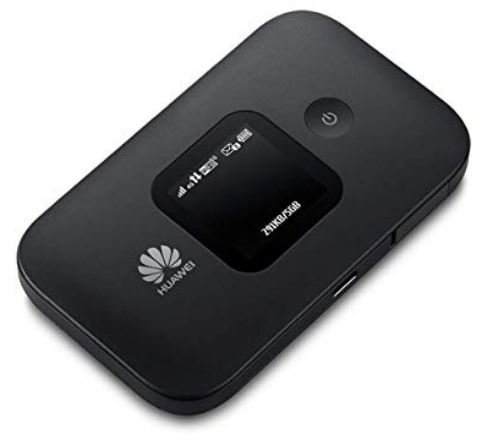 We use an unlocked Huawei MiFi-type (personal WiFi hotspot) device to stay connected to the Internet. We got this from motorhomewifi.com, along with a roof-mounted 4G booster antenna and a small power connector which lets use charge the Huawei from our van’s 12V system. In effect this means we have a WiFi network in the van almost everywhere, which up to 10 devices can share. We’ve used Three Feel at Home SIM cards up to now, which roam across most European countries, although we’re about to start trialling a Vodafone 30-day contract Internet Data SIM card.
We use an unlocked Huawei MiFi-type (personal WiFi hotspot) device to stay connected to the Internet. We got this from motorhomewifi.com, along with a roof-mounted 4G booster antenna and a small power connector which lets use charge the Huawei from our van’s 12V system. In effect this means we have a WiFi network in the van almost everywhere, which up to 10 devices can share. We’ve used Three Feel at Home SIM cards up to now, which roam across most European countries, although we’re about to start trialling a Vodafone 30-day contract Internet Data SIM card.
Our motorhome roaming Internet system is described in more detail here.
Phone
We use 1pmobile.com PAYG SIM cards in our mobile phones which give us International calls and text message in most European countries for 1p a minute. Data on these SIMs is 1p per MB (about £10 per GB, while our Vodafone SIM costs a tenth that), so we don’t have data turned on on our phones unless it’s an emergency.
Doing Laundry in Italy
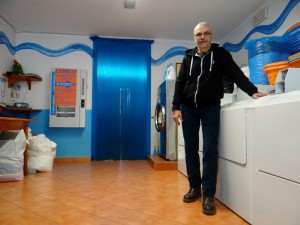
We do a small amount of hand washing here in Zagan, but as a rule we like to use washing machines to clean our clothes, bedding and towels. While in Italy we mainly used campsites for laundry, although launderettes do exist in Italy, especially in the cities. If you search Google for lavanderia self service florence, for example, you’ll see a fair few options pop up. You’ll probably need to plan ahead, and then carry your washing some distance though, as we did once in Palermo, as driving anything, never mind a motorhome in the cities isn’t recommended!
Travelling Italy with a Pet Dog
We found Italy to be very dog-friendly.
Dogs were accepted on public-transport: we took Charlie on a train to visit the Cinque Terre and a bus along the Amalfi Coast (we bought a ticket for him for the train, although the conductor laughed when we presented it, as he didn’t see the need for one for such a small dog!). Some towns and cities had signs requesting we keep dogs on short leads, and we read you need to carry a muzzle for your dog, although we were never asked to show we had one.
One restaurant in Bologne allowed Charlie inside, after leaning over the counter to get a look at him, and he sat under the table while we ate. No-one batted an eyelid.
We visited a few vets in Italy and found them all to be good quality although English wasn’t widely spoken. We found that we couldn’t buy pro-active worming tablets in Italy, and one vet we visited told us Italians only re-actively treated dogs for worms once they had them, and they knew which specific type of worm needed to be treated.
Are You New to Motorhome Touring?
If you’re new to motorhome touring, then we wrote The Motorhome Touring Handbook just for you. It’s got all the info you need to quickly get up to speed choosing a motorhome and using it to take the biggest adventures of your life!
The Motorhome Touring Handbook is available as a paperback or Kindle eBook. You can read more about the book and buy it from Amazon.co.uk.
More OurTour Motorhome Country Guides
Thanks for reading our guide to Italy! If you’ve found it useful, please consider sharing it using the buttons below? This really helps build the blog’s audience, which in turn helps motivate us to keep it alive and kicking. Cheers, Ju and Jay


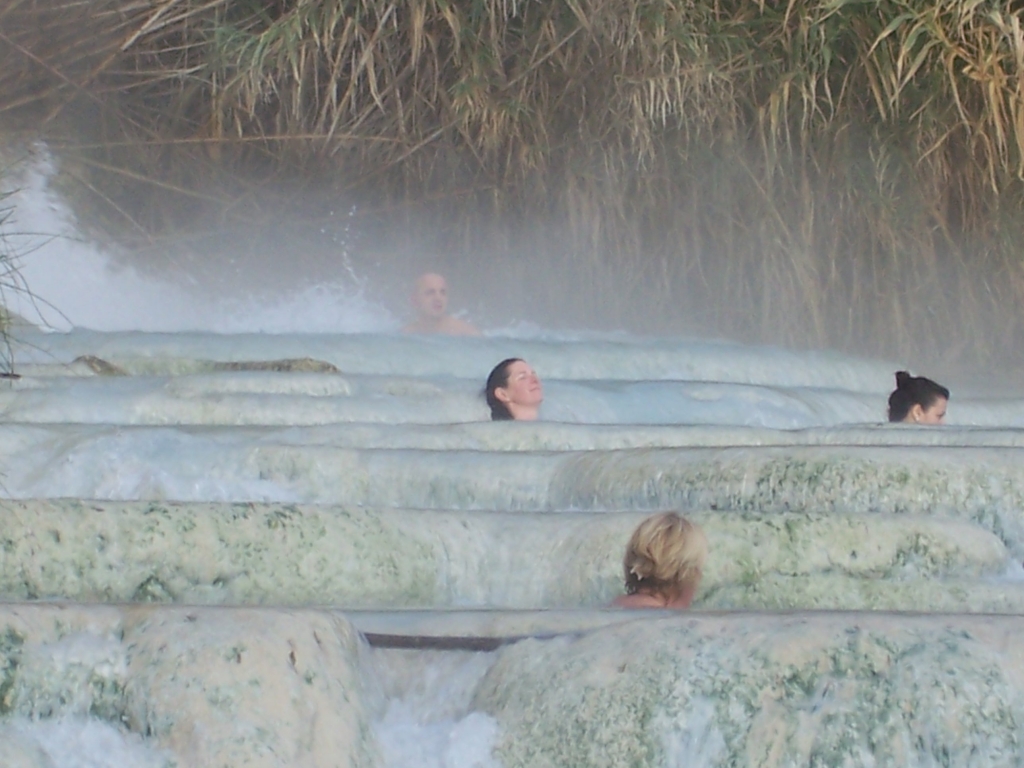
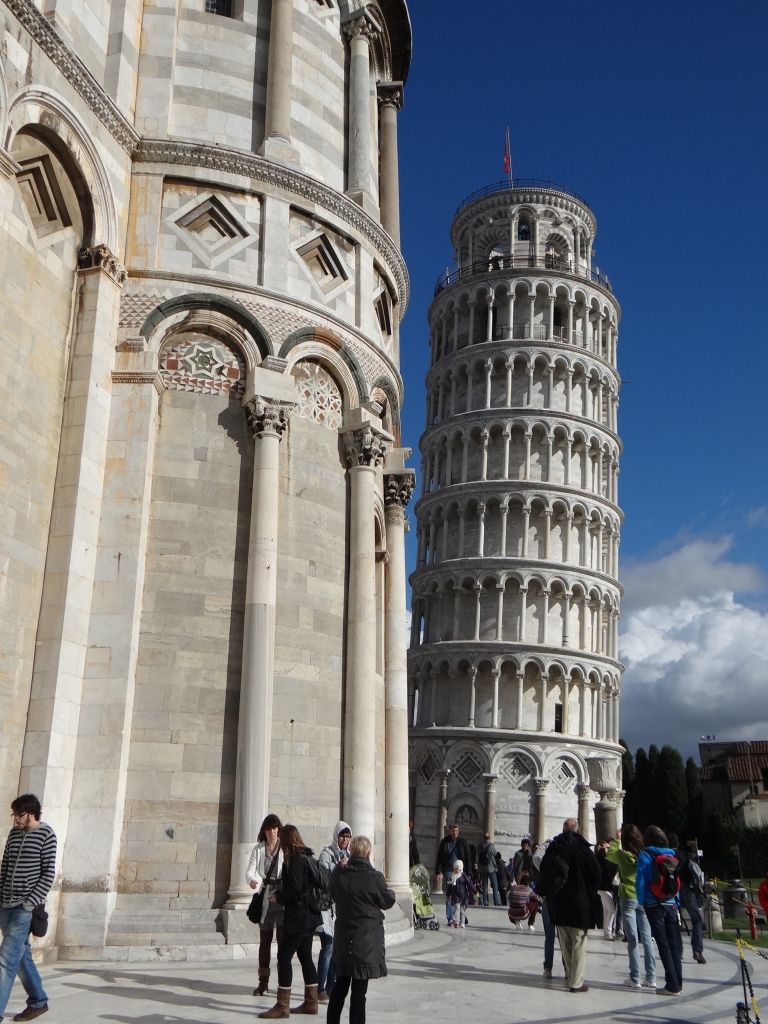
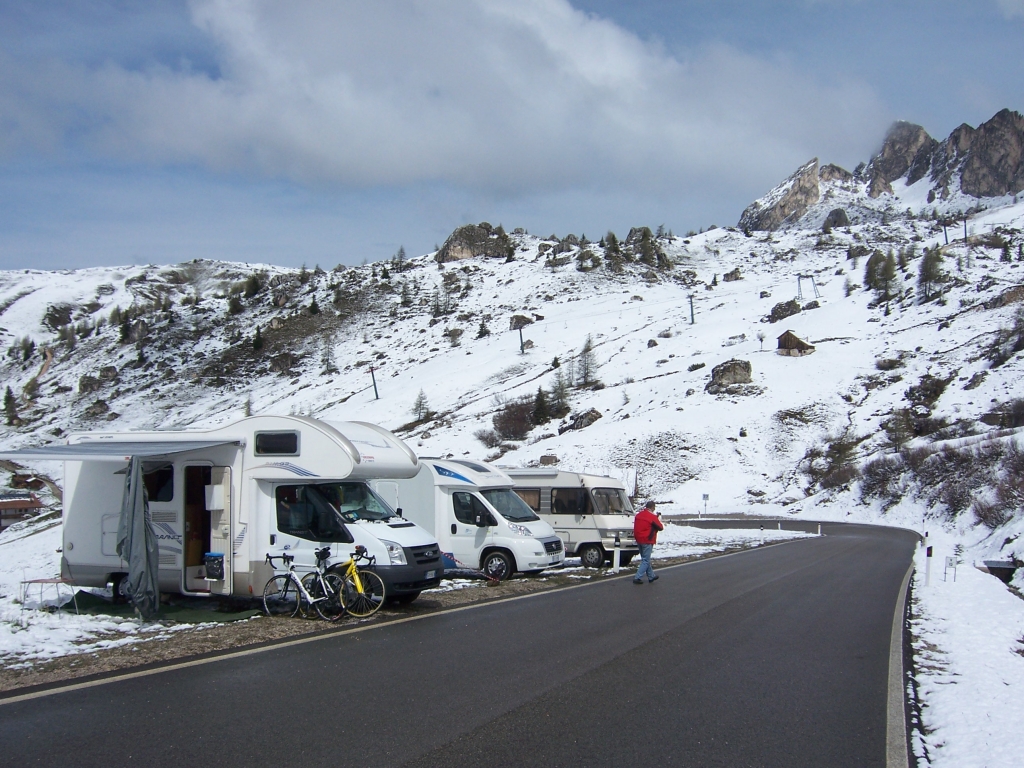
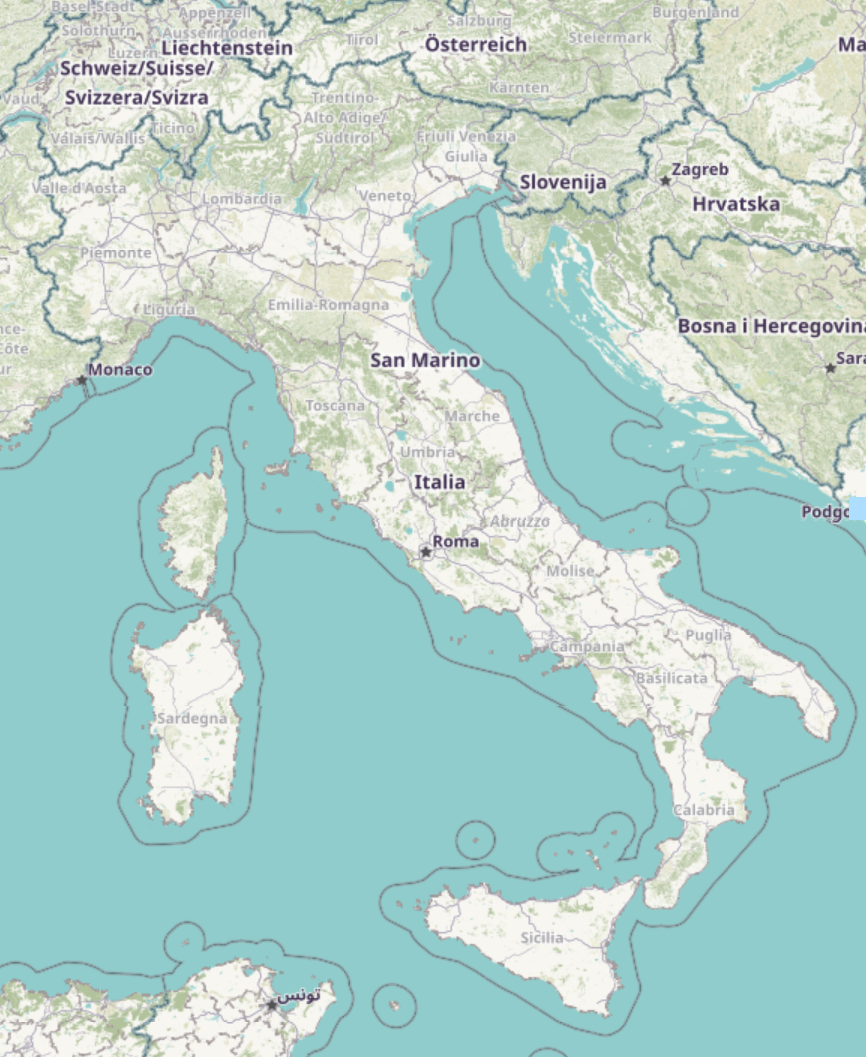
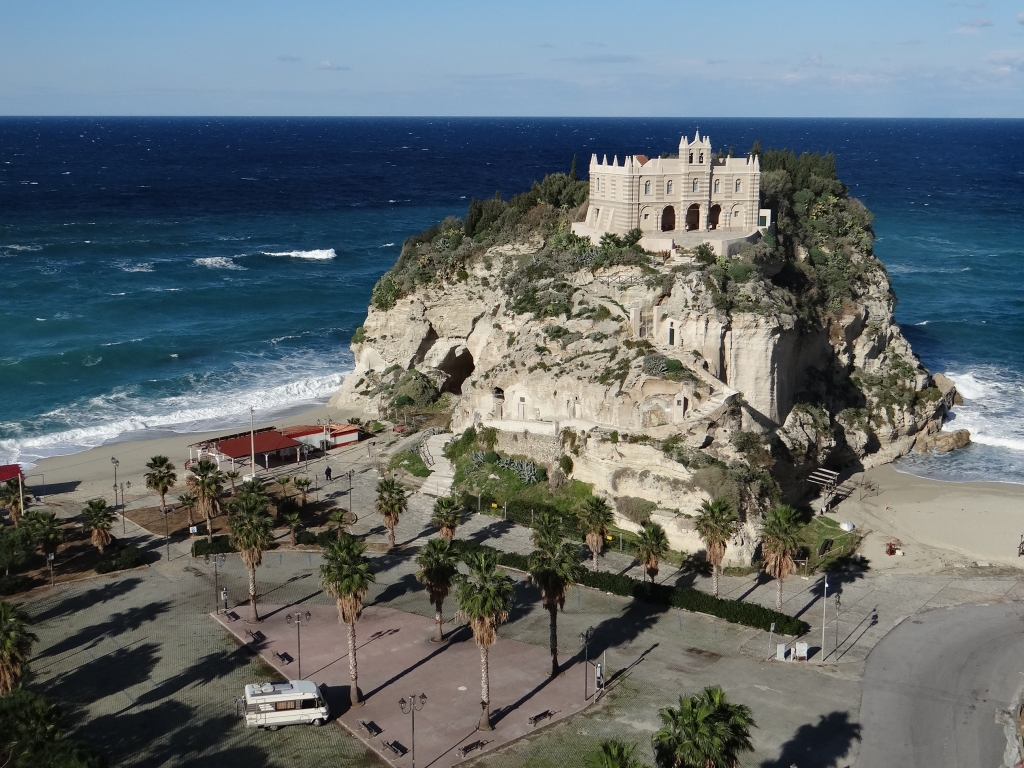
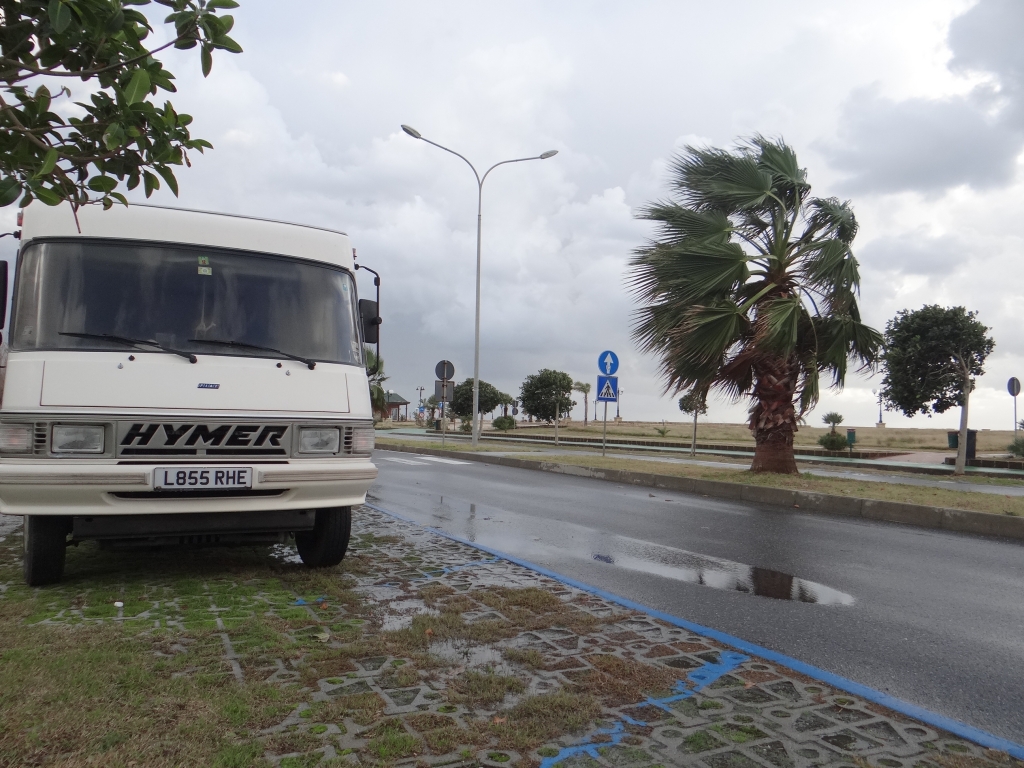
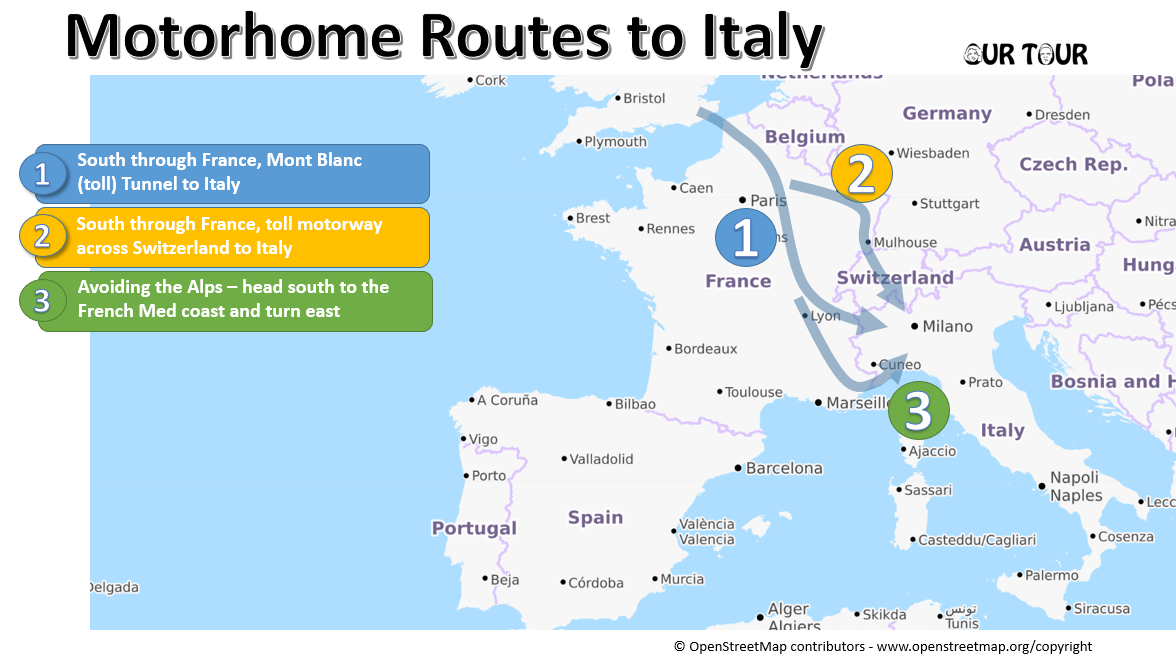
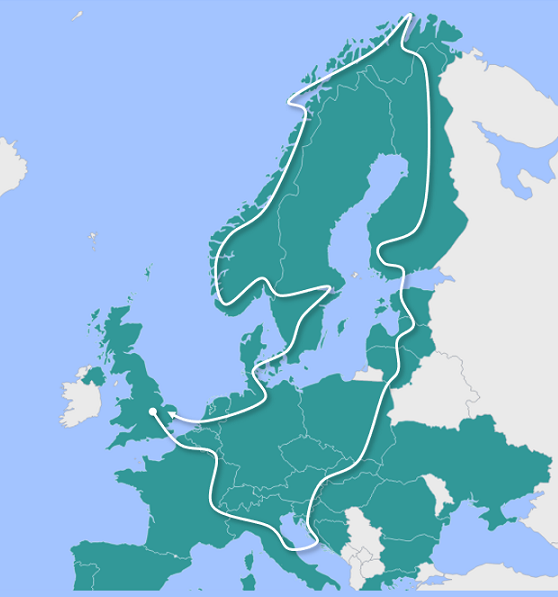
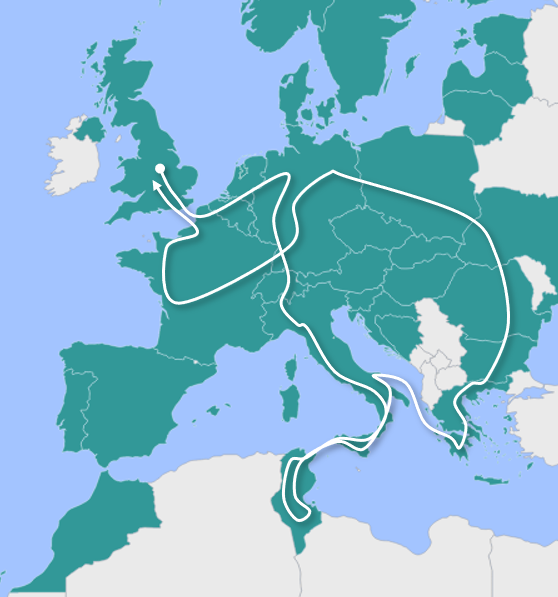
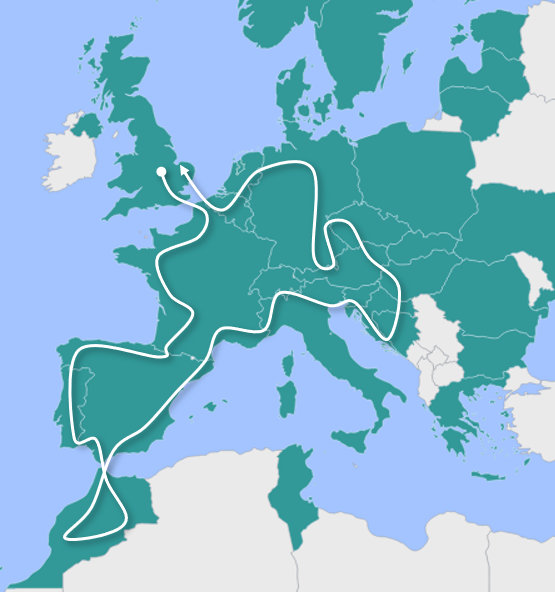
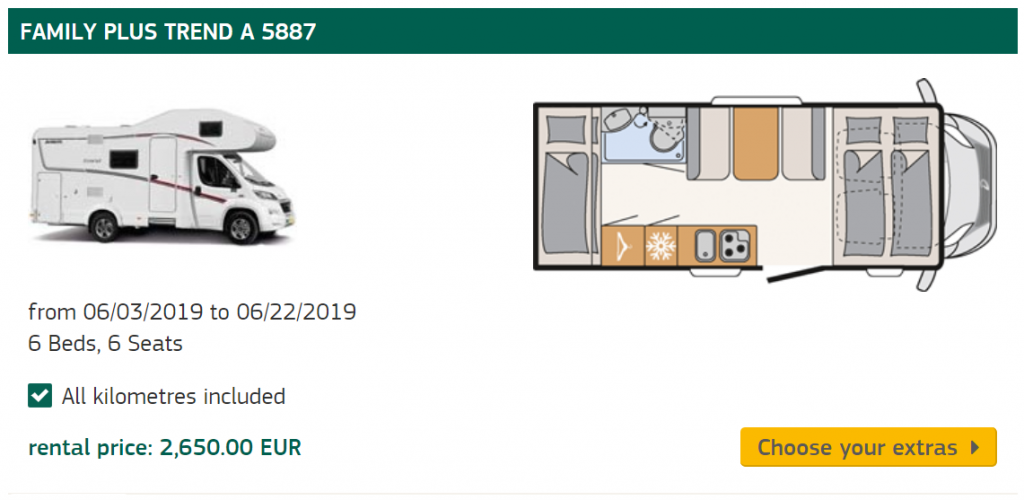
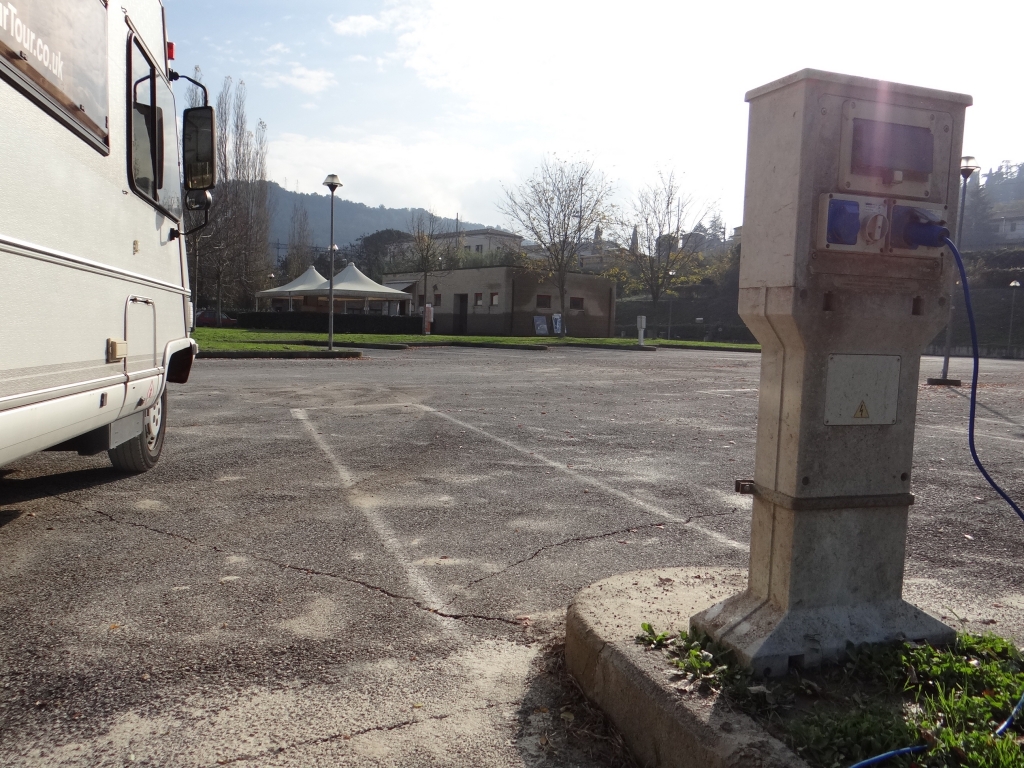
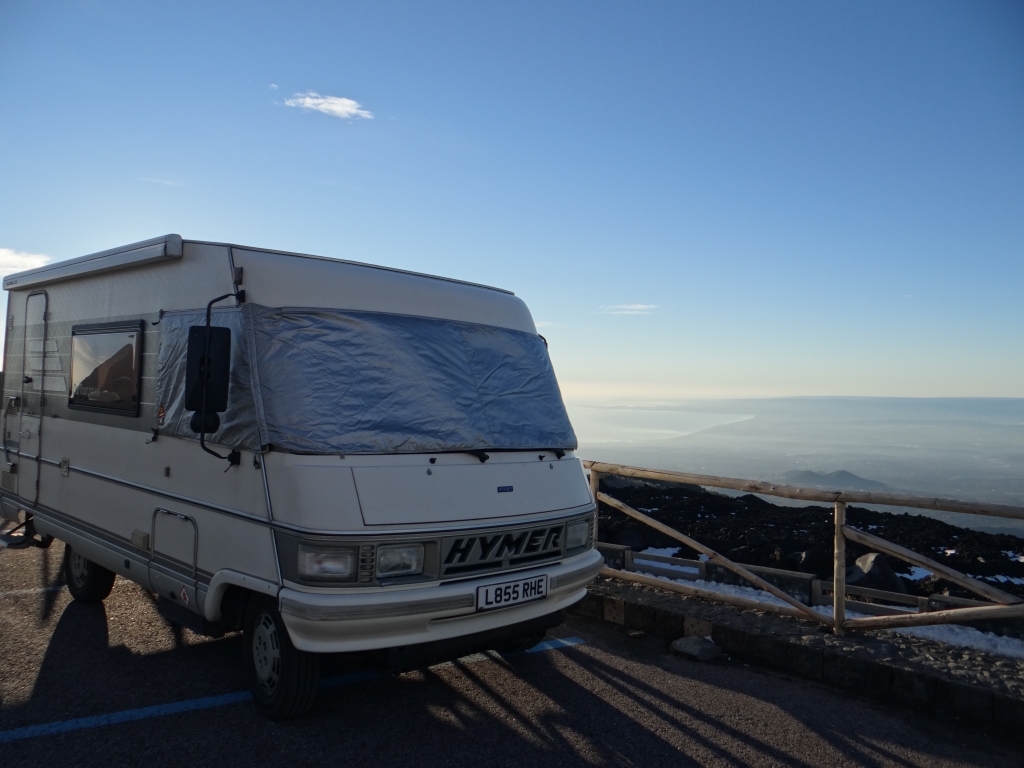
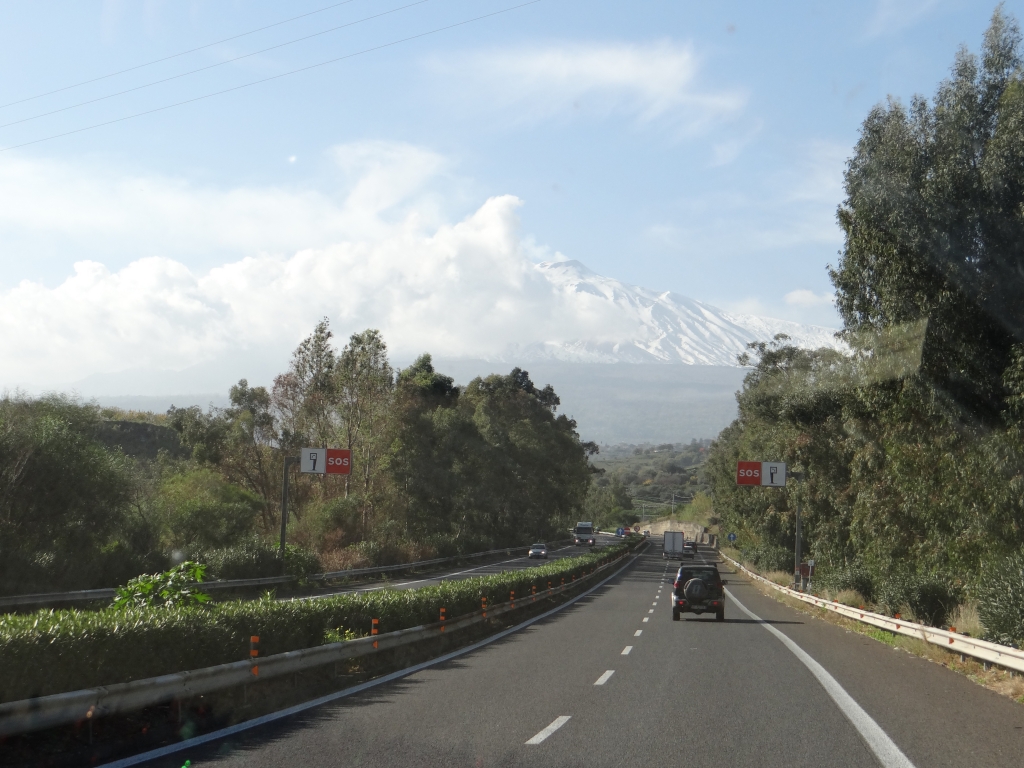
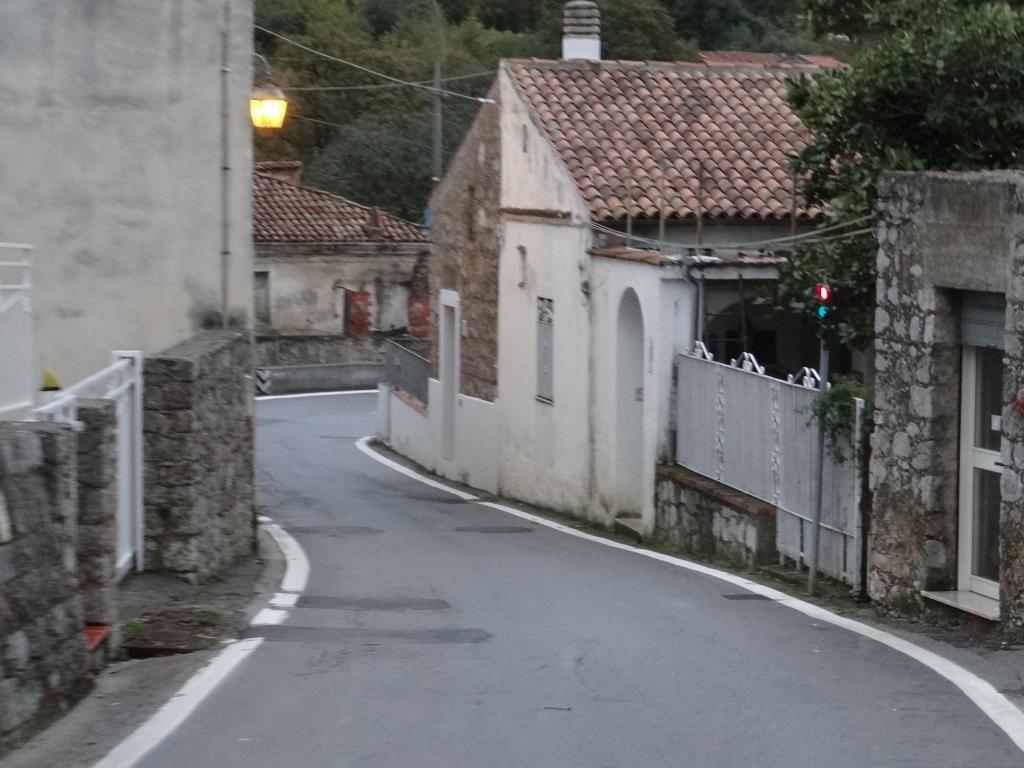
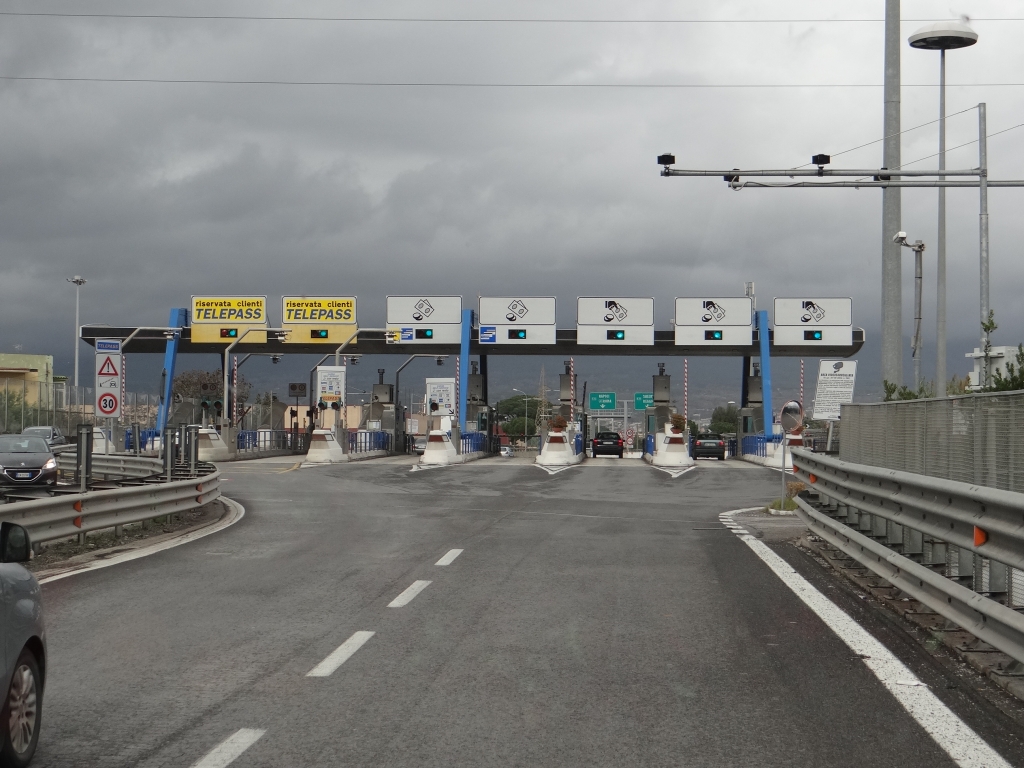
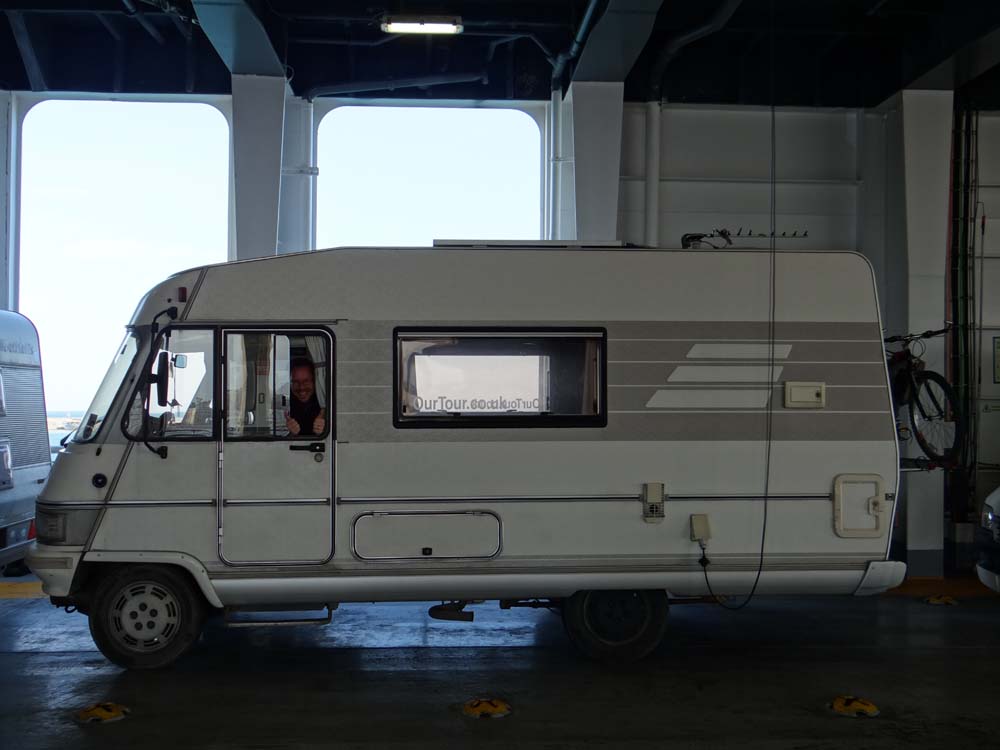
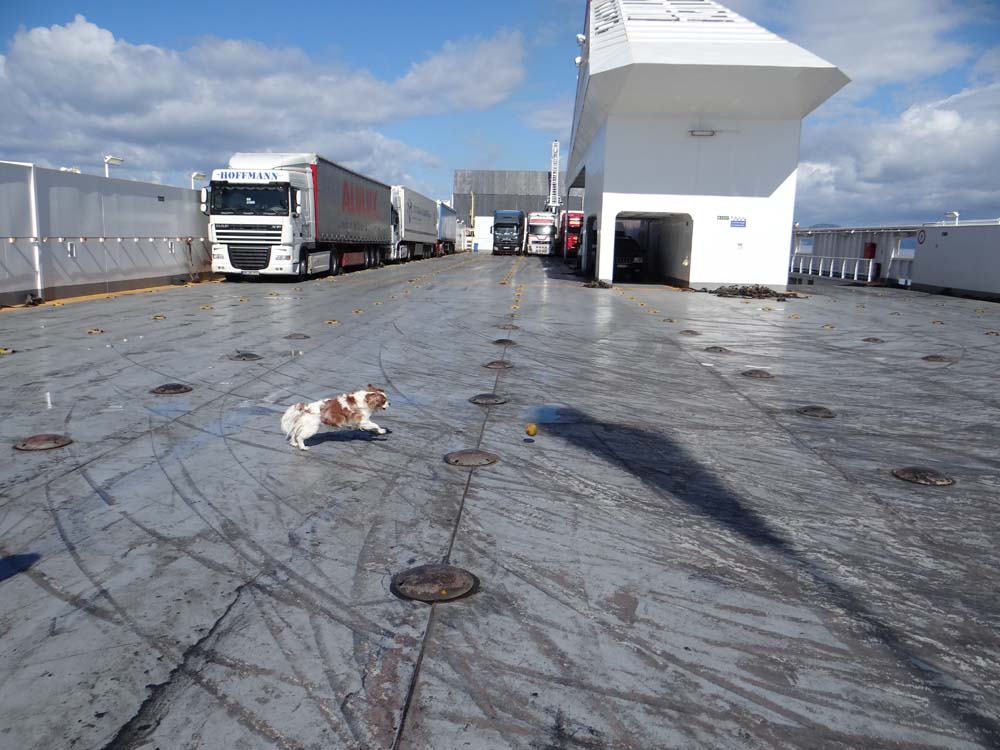
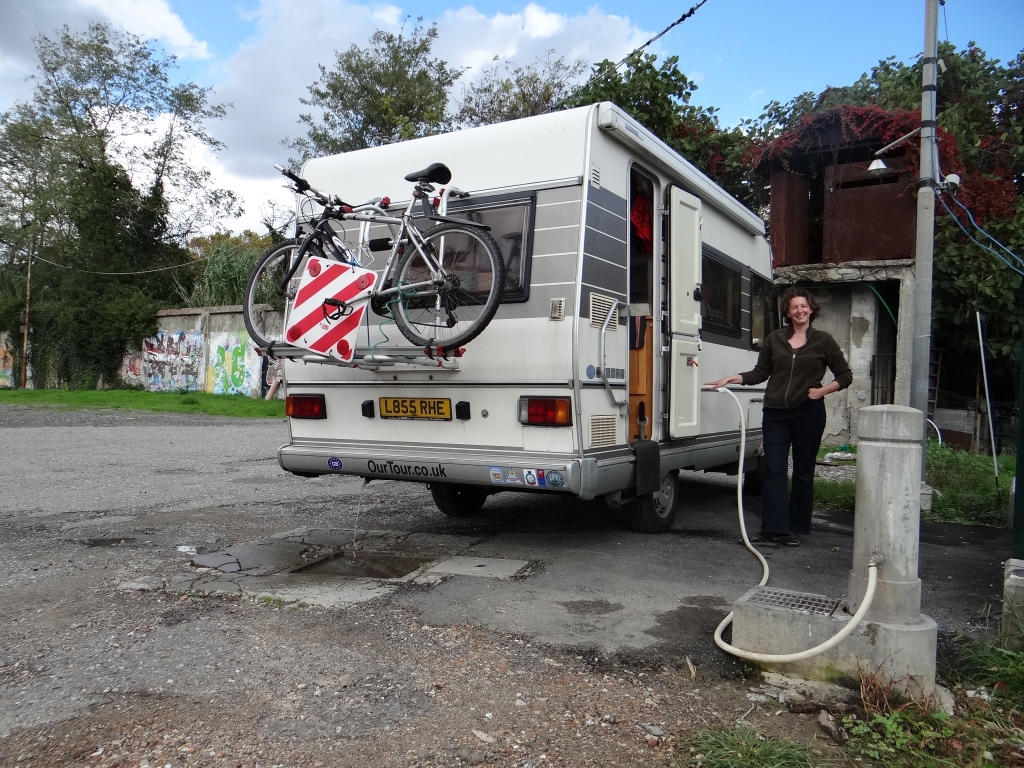
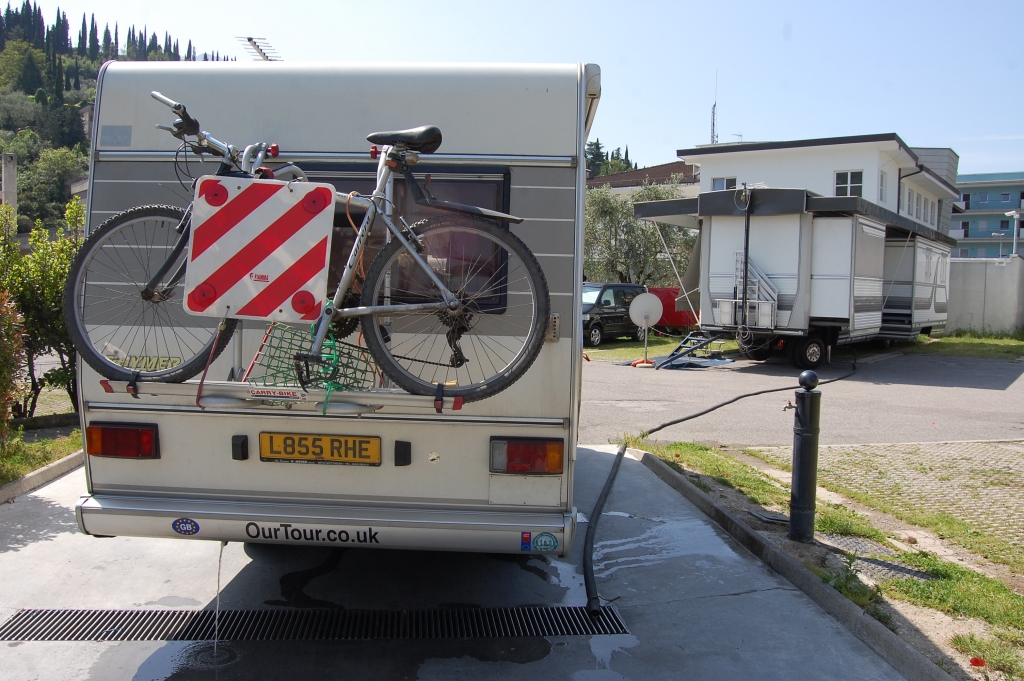

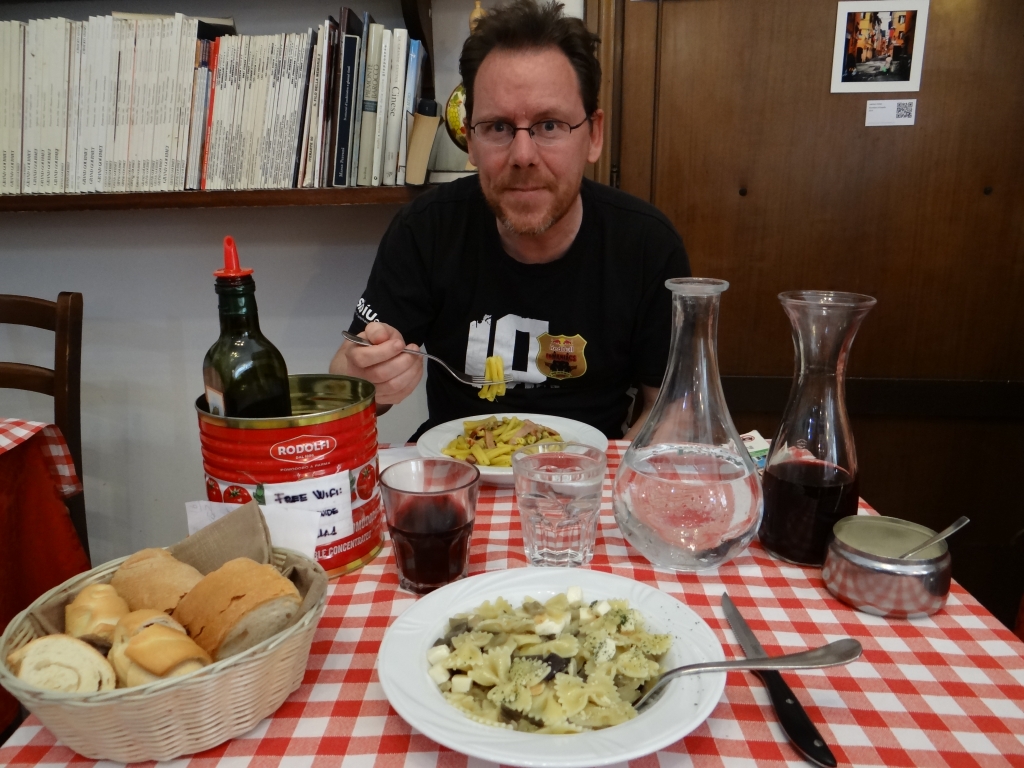
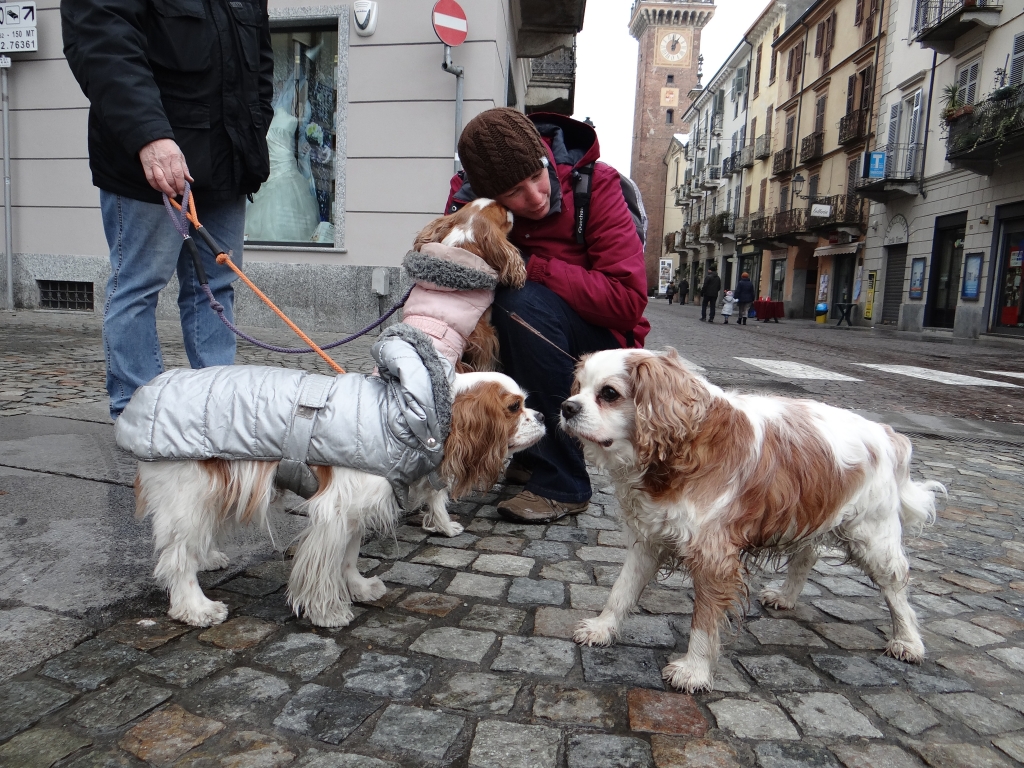
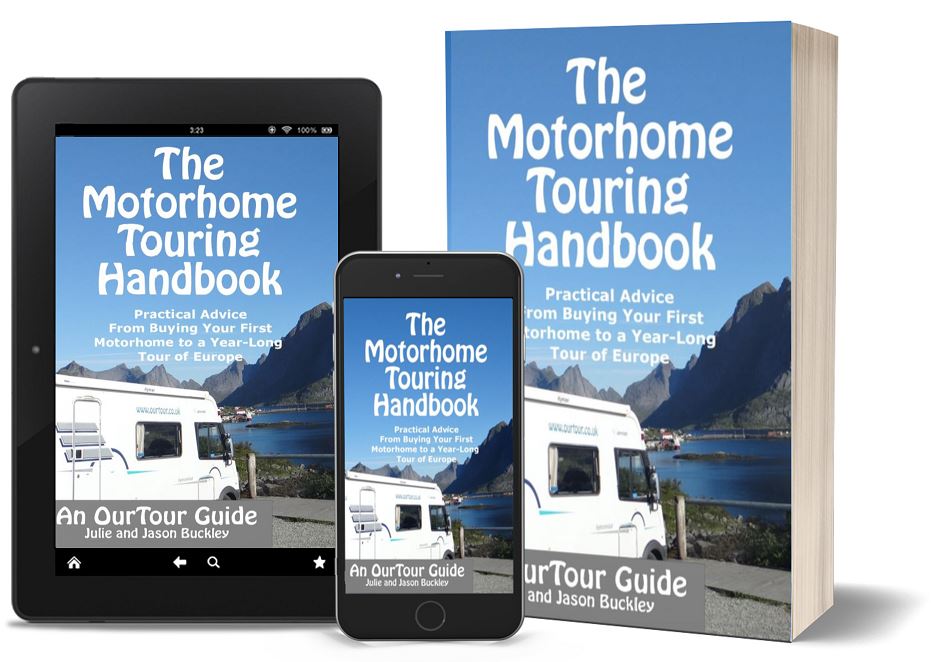

A lot of great information here, all very timely for us. We have just bought our first motorhome and we hope to tour Europe from February/19. We also bought your book, in fact we bought two copies and gave one copy to a friend of ours who is also buying a motorhome. Thank you for all your hard work. Merry Christmas to you both.
Ps. Can I just point out a small mistake here? The title “Driving your motorhome to Norway” should read Driving your motorhome to Italy.
Hi Gilda, thanks very much for your support and have a fantastic tour next year! Yep, I’ll get that typo corrected right away, thanks again, Jay
Really enjoyed this and so much details. Thank you for sharing!
Cheers guys, happy travels! Jay
Thanks for all the great information, so nice of you to share it with us all :)